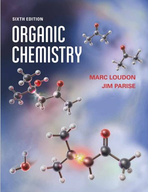Give the principal organic product(s) expected when p-chloroaniline or other compound
Chapter 23, Problem 23.44(choose chapter or problem)
Give the principal organic product(s) expected when p-chloroaniline or other compound indicated reacts with each of the following reagents. (a) dilute HBr (b) CH3CH2MgBr in ether (c) NaNO2, HCl, 0 8C (d) p-toluenesulfonyl chloride (e) product of part (c) with H2O, Cu2O, and excess Cu(NO3)2 (f) product of part (c) with CuBr (g) product of part (c) with H3PO2 (h) product of part (c) with CuCN (i) product of part (d) 1 NaOH, 25 8C
Unfortunately, we don't have that question answered yet. But you can get it answered in just 5 hours by Logging in or Becoming a subscriber.
Becoming a subscriber
Or look for another answer
